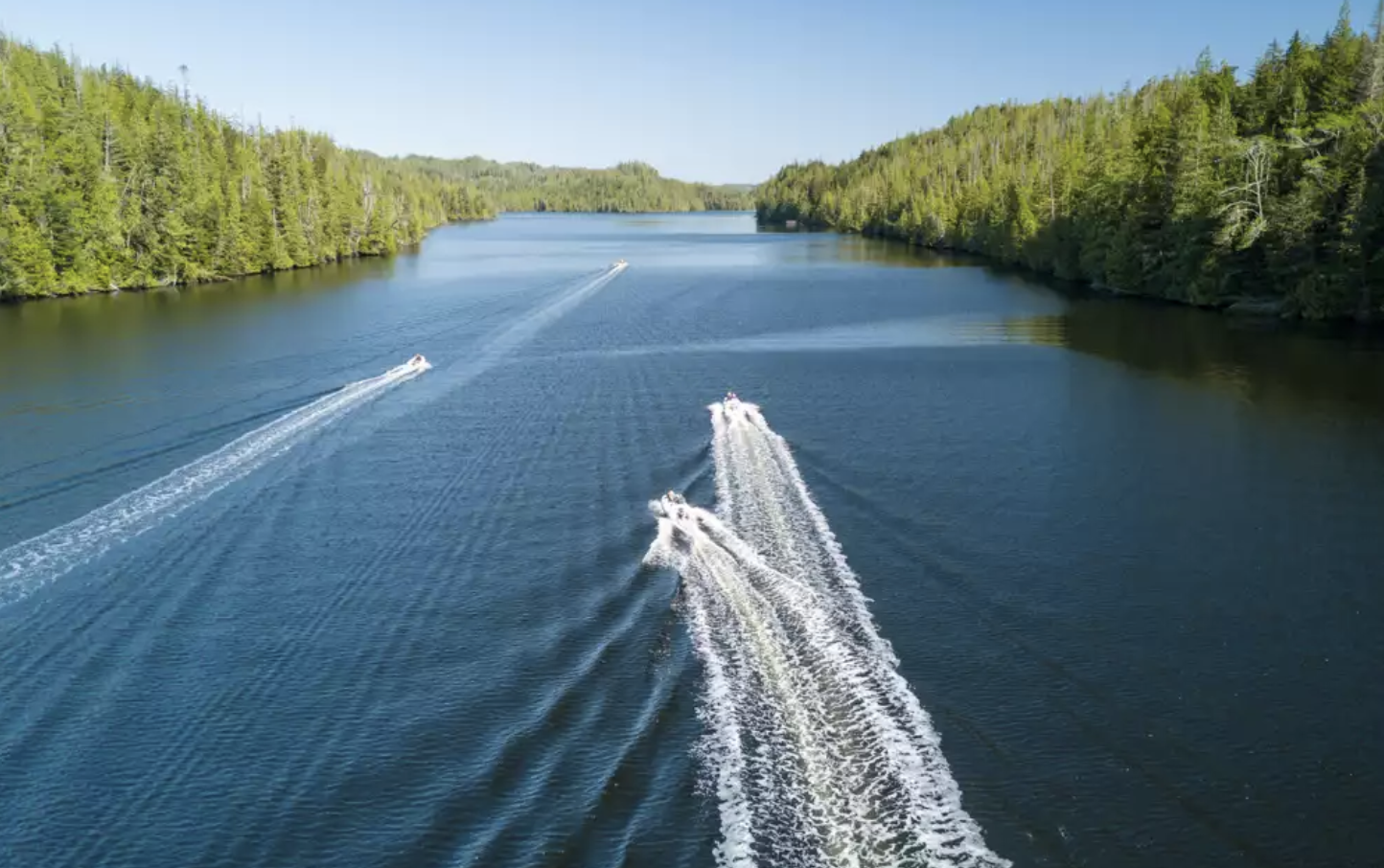
Nine humpbacks surface and exhale fifty yards from our dinghy, between us and shore. Dolphins leap out of the water, inches away, splashing water into our small vessel. A family of brown bears forage on the beach 20 feet away, munching grass. An icy chill briefly blasts as we motor through a waterfall that tumbles from rocky cliffs into the ocean. Tidal rapids roar as we zoom through against the flow. A chunk of ice the size of an 18-wheeler frees itself from a glacier with the sound of a gunshot before it crashes into the sea. We have experienced all of this (and much more) from 10 foot rubber boats.

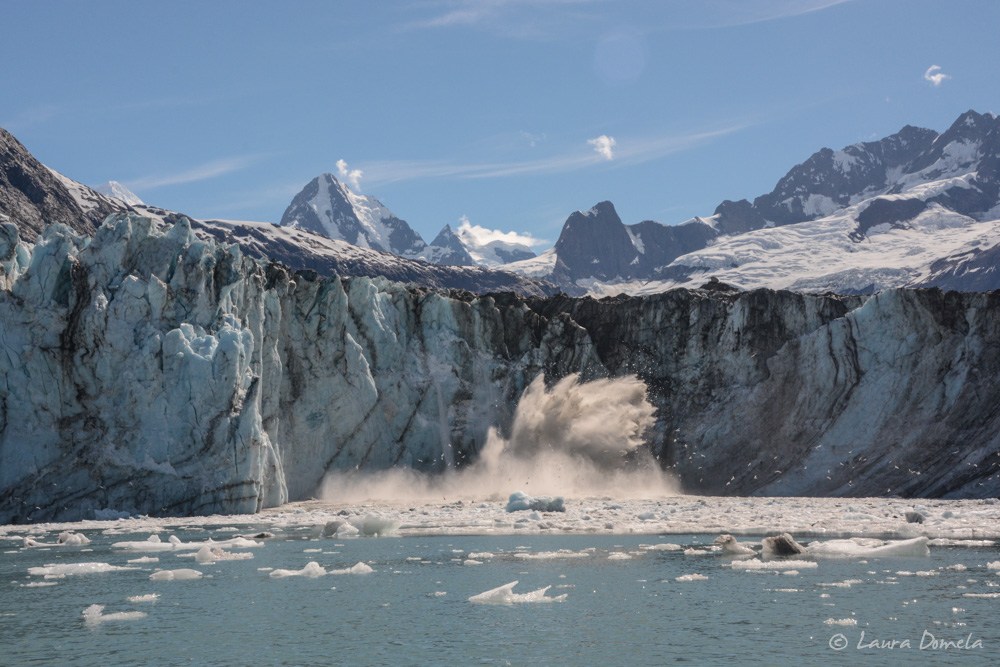
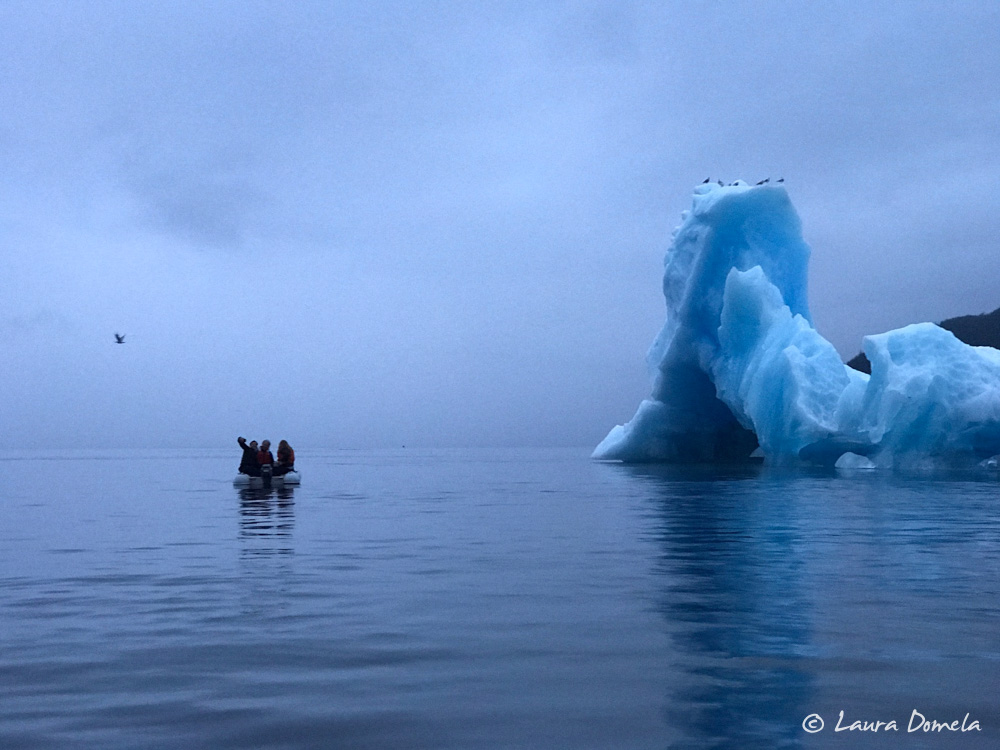
Equipping cruising boats is largely about making them comfortable and safe, but in the quest for comfort and safety a cruising boat quickly becomes complicated with its multiple electrical systems, sanitation systems, heating, cooling, cooking, et cetera.
The dinghy is different. It’s small and simple, and for us, the dinghy is not about comfort or avoiding rocks or staying out of the weather. It’s about being as close as possible to nature and the environment that surrounds us. It’s about accessing hidden spots where we can’t (or shouldn’t) take the bigger boats.
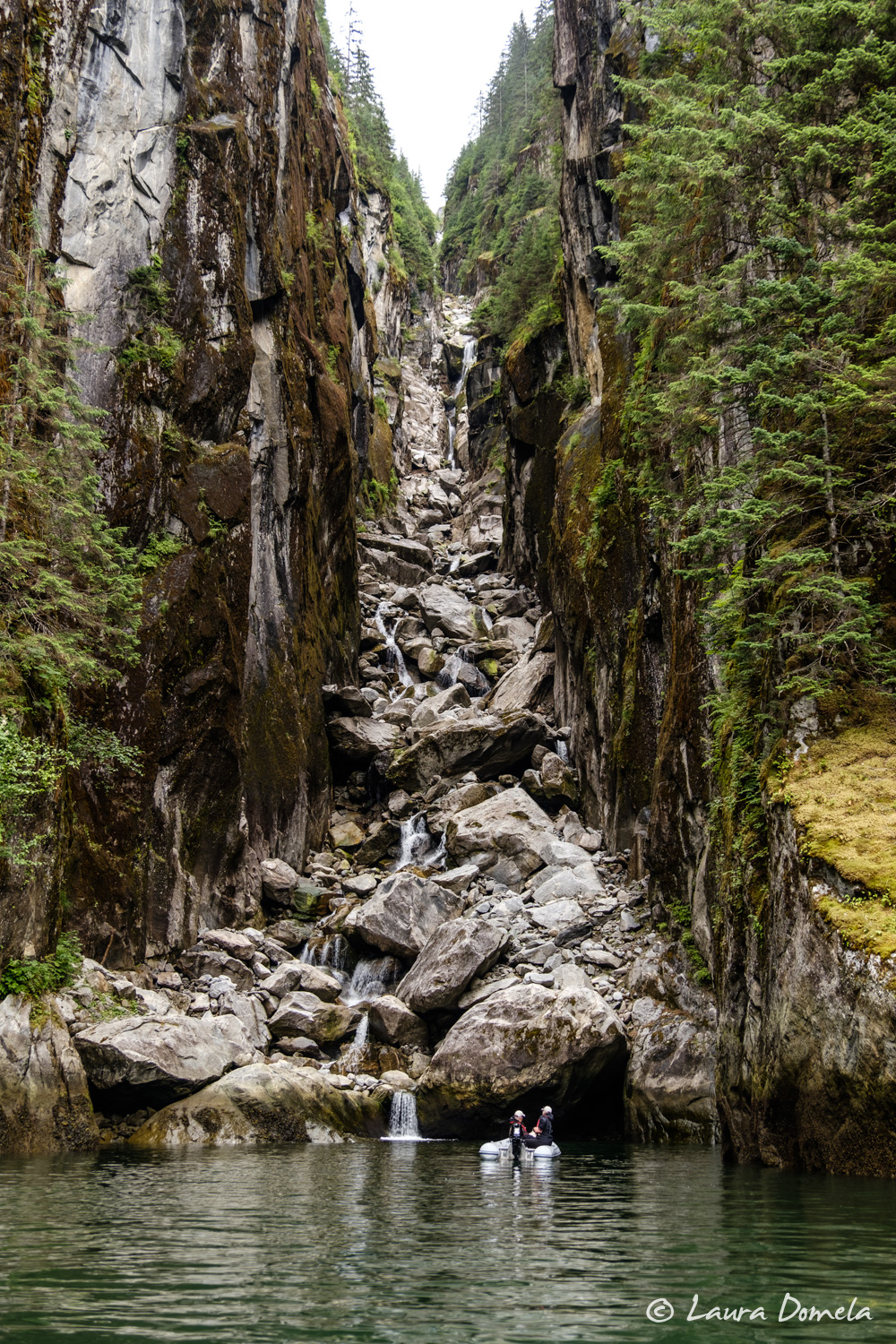
The dinghy is about going fast and covering more ground than we can in a larger, slower boat.
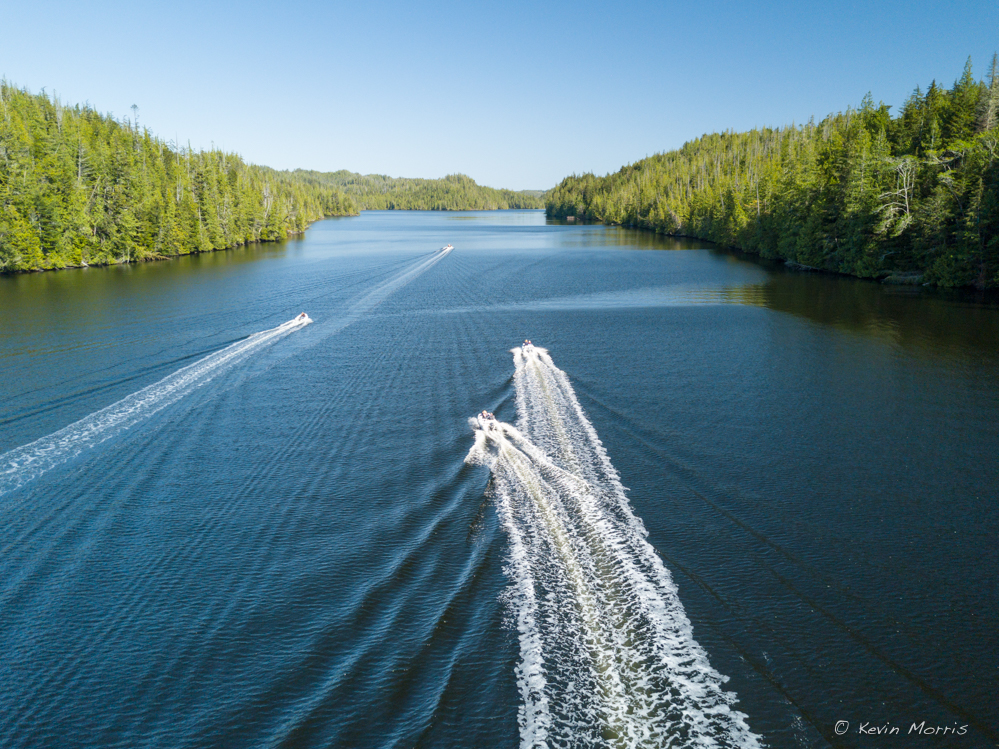
A fast, reliable dinghy adds greatly to our cruising experience.
It is not uncommon for us to travel twenty miles or more in one dinghy outing. With so many inlets and lagoons ripe for exploration, the possibilities seem endless. Often uncharted and with poorly understood reversing tidal rapids, lagoons can be hazardous for cruising boats but incredibly fun to enter and explore by small, fast, maneuverable dinghy. Some entrances are so shallow that we’ve had to tilt the outboard up and use a paddle to get through. Other times, the water moves so fast we might barely make progress (even up on plane!). A putt-putt dinghy doesn’t have enough power to fight strong tidal rapids (and we mostly don’t have the patience to plod along at 2 knots for more than about ten minutes).
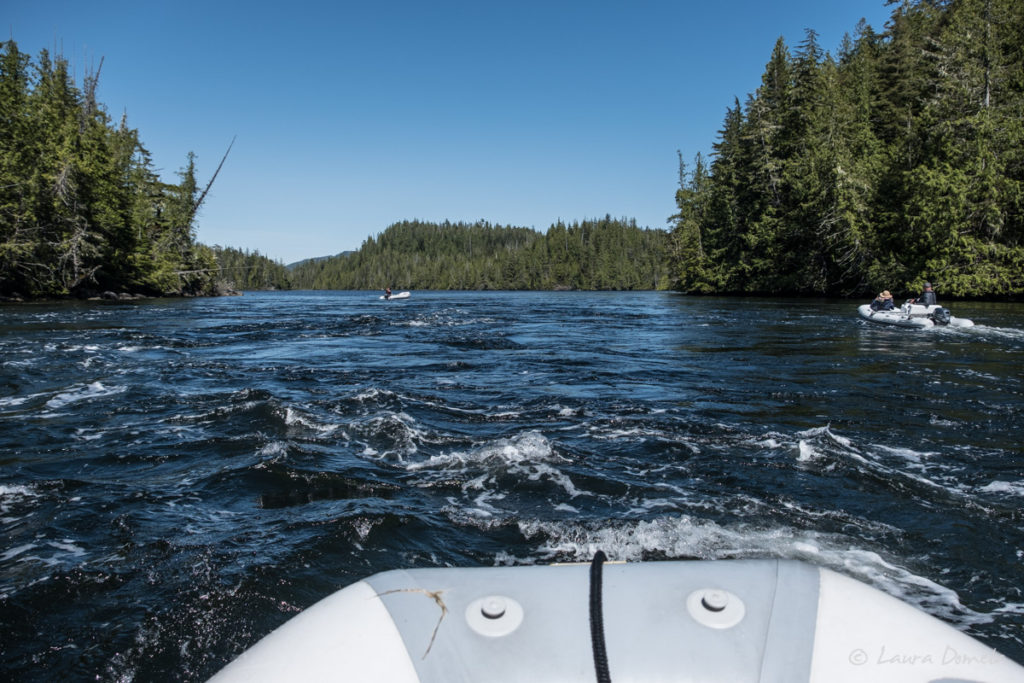
We generally prefer being at anchor to being tied to a dock, and a fast dinghy opens up many options. At Tenakee Springs in Alaska this past summer we anchored five miles from town in a beautiful bay, then dinghied into town to soak in the hot springs. On the way back, a pod of dolphins raced right alongside our speeding dinghy! We frequently use our dinghies to make quick trips from state parks or anchorages to nearby markets for provisioning, or to local restaurants for a nice dinner out.

What kind of dinghy?
When shopping for a dinghy it is easy to fall victim to fancy-feature-itis. After all, a console can be more comfortable than a tiller, big cushy seats with backs are nicer than a simple bench, electric tilt is much more convenient than hefting an outboard up and down by hand, electric start is much easier than pulling a rope… and ALL of these add weight. In the Inside Passage and Southeast Alaska where we cruise, tidal swings more than 20 feet are common. That means you can pull your dinghy onto a nice beach, take a short hike, and come back to find your boat high and dry – a hundred yards from the water. At that point, you may find yourself cursing some of those hefty creature comforts.

We prefer the lightest, simplest boat that will do the job, the most powerful outboard that the boat can handle, and the lightest motor we can find that meets our specs. Safe Harbour and Airship are both equipped with simple, 10′ rigid inflatable boats (RIBs). The rigid hull makes for good performance and durability, and the inflatable sides form full-time fenders so you don’t have to worry too much about bumping into things (like your own boat, when you moor to it). There are many good brands out there – AB, Achilles, Walker Bay, Zodiac, and more. RIBs tend to be available with fiberglass or aluminum hulls (each has its advantages), and with Hypalon or PVC tubes (we prefer Hypalon for durability).
For power, we’ve had great luck with the smaller 4-stroke fuel-injected Suzukis (9.9HP, 15HP, 20HP) on Airship’s RIB. These three motors all seem to be exactly the same mechanically, with different engine control programs delivering the varying power outputs. All three are the same size and weight. In our use, the fuel injection has proven itself well, as carbureted engines this size are prone to carburetor jet clogging due to the tiny size of the jets and ethanol additives in most gasoline. If you’re lucky enough to find one, some of the older 2-stroke outboards are incredibly reliable. Safe Harbour uses a Yamaha 9.9HP with a carburetor upgrade that raises it to 15HP.
The combination of simple, lightweight RIB and light, powerful outboard gives us dinghies that can cruise in the 15-22 knot range, get on plane with 4 adults, and still are under 300 lbs fully equipped with engine, fuel, seats, and gear. That light weight pays big dividends in our typical use, which sometimes involves lifting, dragging, and otherwise portaging the boat to get into (and out of) many intriguing places. If we “upgraded” to console dinghies with steering wheels, remote throttles, batteries, electric start and lift, and all the other “nice to have” features – we’d be tipping the scales more toward 500 lbs fully equipped, we’d add a lot of additional challenges handling, launching, and storing the boat, and we’d cut ourselves out of a lot of amazing adventures.
Don’t forget the davit
The best dinghy in the world is useless if it’s too difficult to launch. We’ve seen dinghies fall from poorly-maintained davits and we’ve heard stories of cruisers breaking bones trying to wrestle a dinghy off the boat deck in bumpy conditions.
For Pacific Northwest cruising, we prefer transom-mounted davits. We’re never in conditions rough enough to worry about filling a transom-mounted dinghy with water or ripping it off it’s perch, and we aren’t using our swim platforms enough here in the cooler waters of the PNW that we miss the access. With a transom-mount, we can launch or retrieve the dinghy and be ready to go in two minutes or less, and that simplifies our cruising life enormously compared with the increased time and complexity required with a crane and a deck-mounted dinghy. For us, the ability to swing into an anchorage, drop the hook, and be in the dinghy blasting up a stream 5 minutes later adds a lot to our adventure.
Safe Harbour has a Roskelley-Olsson RS-1 davit.
Airship has a Sea Wise davit system.
Regardless of where your dinghy is mounted, you’ll want to be sure its secure enough for the weather and sea conditions you’re likely to encounter. There are far too many stories of cruisers arriving at their destination after a rough day only to find that their dinghy departed somewhere along the way. Follow the davit manufacturer’s recommendations on installing, operating, and maintaining the davit, securing the dinghy, and all weight and size restrictions.
Overall, thinking of our dinghy as a boat for “exploration” rather than “ship to shore” adds a whole new dimension to our cruising experience, and has allowed us to explore places we’d never see otherwise. Having the speed and range and versatility to cover many miles, challenge rapids, navigate shallow waterways, and moor in challenging situations gives us a range of capabilities we enjoy almost every day of our adventures.

